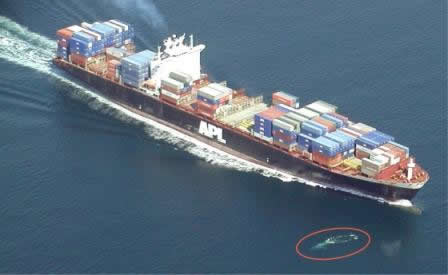Workshop: Collisions Between Marine Mammals and Ships, 18-20 June, 2014
This month, Panama will host the last in a series of three workshops addressing human impacts on marine mammals in the wider Caribbean region.
The series has been jointly sponsored by the IWC and the United Nations Environment Programme (Specially Protected Areas and Wildlife). The first two workshops were primarily training events, covering forensic detection of human impacts, and safe techniques for responding to entangled whales. The final event is different and will bring together a wide range of experts to share perspectives and experiences of collisions between vessels and marine mammals.
Known as ‘ship strike’ this is a problem for vessels and shipping as well as marine life. Collisions have caused serious passenger injury and vessel damage, and for some vulnerable whale populations, failure to reduce the rate of ship strike mortality could be the difference between extinction and survival.
The most effective solution is to keep vessels and whales apart, but this can only be achieved with more knowledge. It is hard even to build an accurate picture of where ship strikes occur because large vessels may not realise a whale has been struck unless it becomes lodged on the bow of the ship, and remains there until the ship enters port. The IWC is collating international data on ship strikes so that collision hot spots can be identified and mitigation targeted. As well as strike locations, more information is needed on the movements and behaviour of the most at risk whale populations, and the vessels causing most damage in terms of size, speed and type.
At the Panama workshop, representatives from national and regional government, science and academia, the shipping and boating industries and environmental organisations will work together, to review existing information and knowledge gaps before assessing the feasibility of proposed mitigation measures.
For more information on ship strikes click here.
To read the latest advice on ways of reducing the risk of collision, click here.

